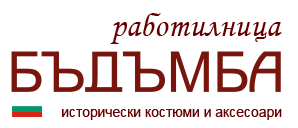The shields were made by my colleague reenactors. My work on them was limited to research, selection and decoration drawing.
- Shield from the Second Bulgarian Empire (12th to 14th centuries). Wall paintings of warriors carrying shields depicting lions were found in the fortresses of Trapezitsa and Cherven, 13th century. When drawing the lion on this shield, I also took into consideration the depictions on other finds – a coin of Tsar Ivan Shishman, 1371 – 1393; a belt buckle from the 14th century; a medallion from Dzhulyunitsa, 13th to 14th centuries.
- Balkan shields (12th to 14th centuries). The decoration was based on elements of Serbian wall paintings depicting warriors. The kite shield was the most widely spread type of shield across Europe after the 11th century and was used both by the cavalry and the infantry. The triangular shield is its later version.
- Russian shield dated to the middle of the 13th century. Source: stone church relief in Novgorod.
- West European shield with the coat of arms of the Latin Empire (1204 – 1261)
- West European pavise for hand-to-hand combat (14th – 16th centuries) with John Hunyadi’s family crest
- Viking shield. The source of the ornament is a stone relief in Gotland, 7th – 9th century
- A - Murmillo’s shield. Its shape and make are similar to those of the scutums carried by Roman legionaries but it is smaller and has a different type of decoration. Based on information gathered from Roman mosaics dated to the 1st – 3rd centuries.
B - Thraex’s shield. Based on information gathered from Roman mosaics dated to the 1st – 3rd centuries.
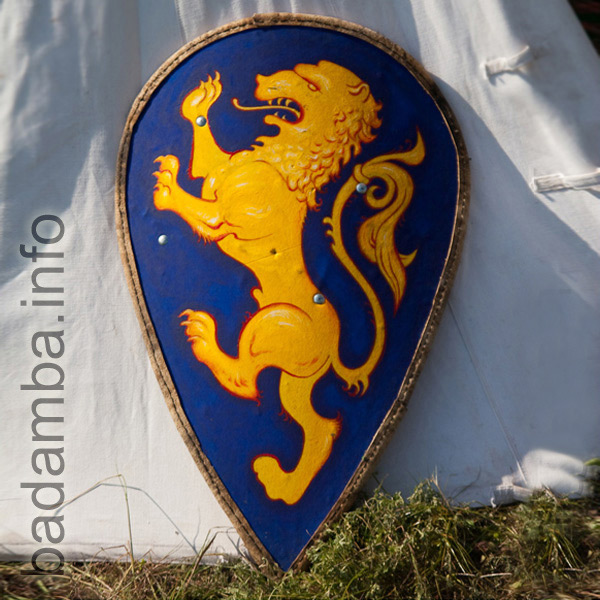
1
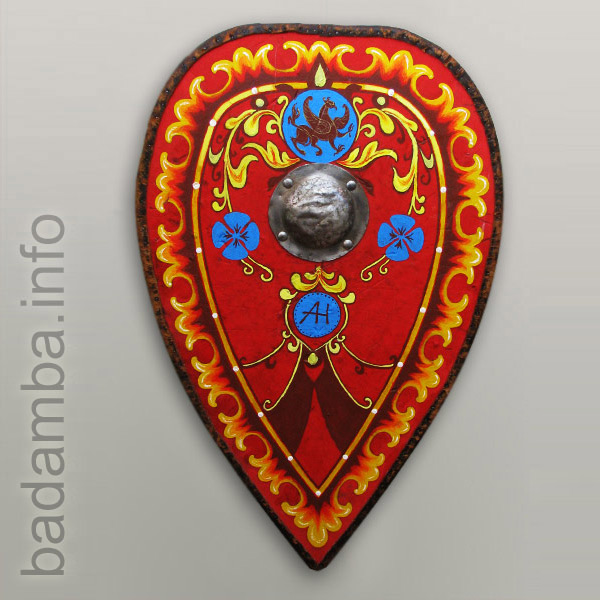
2A
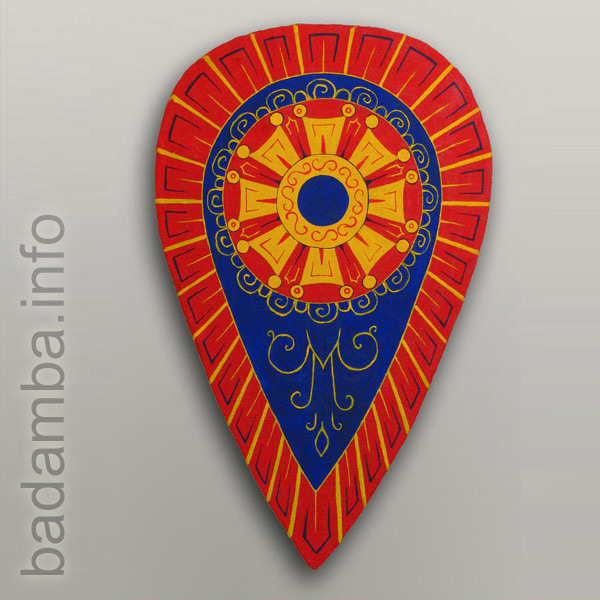
2B
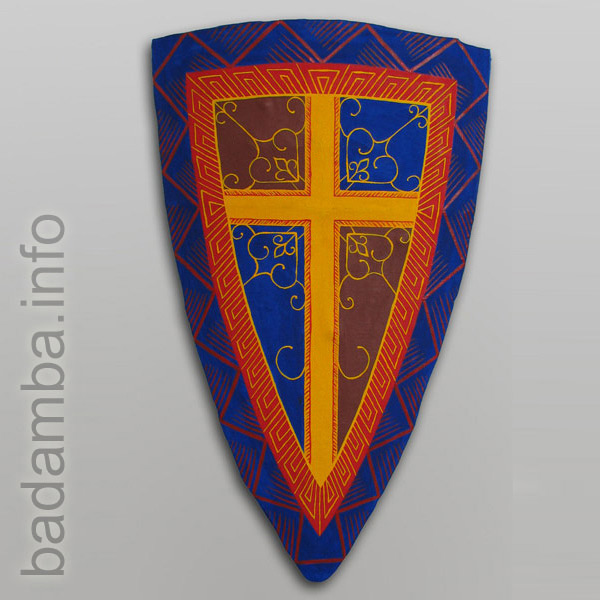
2C
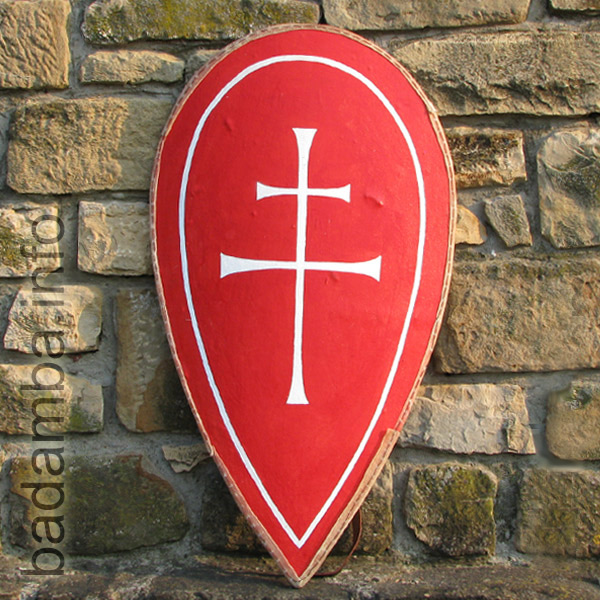
3
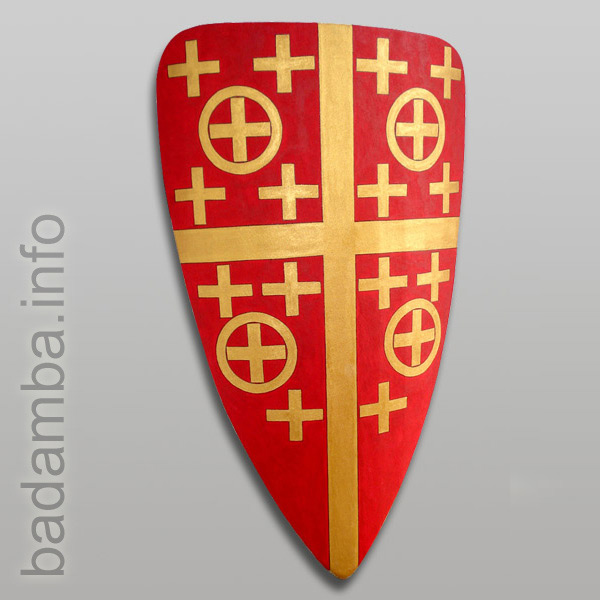
4

5

6
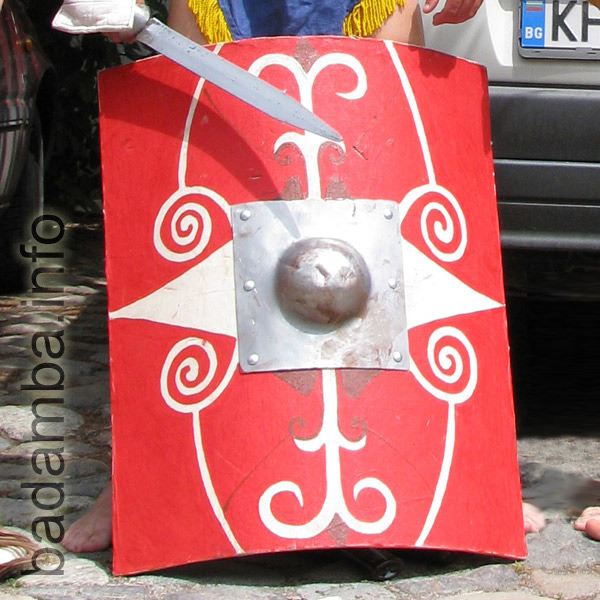
7A
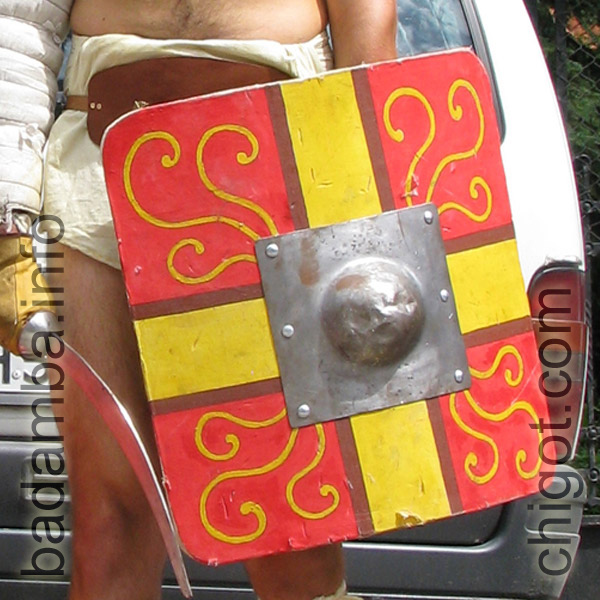
7B

